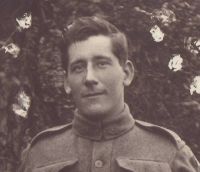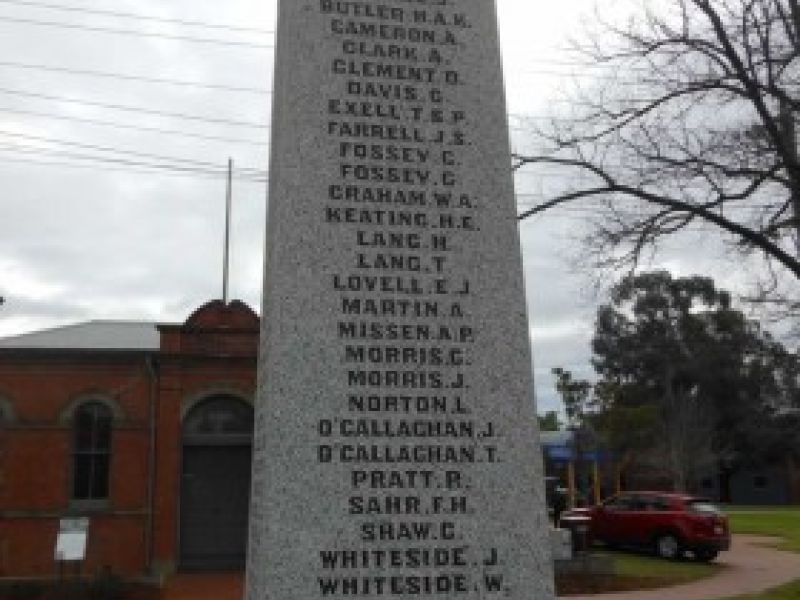MELTON WAR MEMORIAL ANALYSIS
Made by monumental masons Jageurs & Son, of Parkville, the Melton War Memorial has a concrete base, a stepped, rough granite pedestal, and a smooth dark grey granite obelisk.
On one side of the obelisk is carved
MELTON DISTRICT HEROES
GREAT WAR 1914-1918
FALLEN HEROES
followed by the names of the 30 local servicemen killed at war
LEST WE FORGET
The remaining 3 sides are carved
MELTON DISTRICT HEROES
with the names of the 105 local servicemen who returned home.
The Melton memorial sits on a rise in the median strip of the main road, with circular flowerbeds and bluestone edging. It is located outside the Mechanics Institute and former Shire Offices building, and quite conspicuous on driving into town. Interestingly, the local heritage walk takes in the Mechanics Institute, but not the war memorials right outside the door.
The Melton Honour Memorial was unveiled at 3pm on Sunday 22 August 1920. Shire President Cr T Hornbuckle introduced official guests and speakers Hon. WC Angliss, MLC, Hon AR Robertson MLA, and Hon. JH Lister, MHR, who all spoke of the importance of remembrance of the dead and repatriation of the returned. Photographs of the unveiling at Melton (undated and unreferenced ) show a good crowd gathered around the obelisk, which is draped in a Union Jack flag. It is reported that some 100 soldiers, sailors and sisters attended from the Base hospital, along with local returned servicemen, relatives, and local residents.
After the rousing speeches, all stood with bared heads while the ‘Last Post’ was sounded. Sgt. Lister then presented a framed Shire Council Shire Certificate to local returned soldiers and to the relatives of the fallen. It was reported that "many were visibly affected as they received the mementoes and many silent tears were shed”.[1] Memorials like these are thought to provide a language for loss: a way to materially and spiritually honour the dead; a way to deal with grief and facilitate recovery; to eulogise the dead; and in some ways as a substitute for a funeral or grieving ritual. We can only wonder what this memorial meant to the individual widow, the child left behind, the mother, father, family, or indeed to the surviving serviceman: ‘Laying a wreath, seeing a name, hearing it read out, remembering a life and picturing death: we can only imagine the unreported acts of grieving.’[2]
Today, the memorial is still the centre of the ANZAC Day services in Melton, and is co-located with memorial plaques to WWII and Korea, and a substantial Vietnam memorial.
[1] ‘Unveiling of Soldiers’ Memorial at Melton’, Melton Express, 28 August 1920, p 3.
[2] Ken Inglis, Sacred Places: War Memorials in the Australian Landscape,new ed., [e-book], Melbourne, Melbourne University Press, 2005, p.223.
 Rebecca Hart
Rebecca Hart